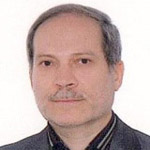Measurement and evaluation of human capital development of faculty members (case study of University of Tehran)
The development of human capital of faculty members is an effective achievement in the direction of the development of the higher education system. However, the evidence based on the results of experimental research indicates the low quality of the faculty members' performance. The aim of the current research is to measure and evaluate the development of human capital of faculty members, which was done with a mixed approach (sequential exploratory).
In the qualitative part of the research, the participants were the faculty members of the universities and research institutes of Tehran, and 13 of them were interviewed and the required data were collected using the purposeful sampling method. The data analysis of this section was done using thematic analysis method. In order to evaluate the reliability of research findings, immersion and recoding approach was used by calculating Cohen's kappa coefficient. In the quantitative part, the statistical population included the faculty members of the University of Tehran, 150 of whom were selected using Cochran's formula and the relative stratified sampling method from the four campuses of "Humanities", "Behavioral and Social Sciences", "Basic Sciences" and "Technical-Eengineering" were selected as samples. The tool for collecting data was the quantitative part of the researcher-made questionnaire on the development of human capital of faculty members in a 6-point range. The validity of the research tool was verified by formal, convergent and divergent method and its reliability was confirmed through Cronbach's alpha test and composite reliability.
The findings of the qualitative section were categorized and presented in 9 dimensions, which include improving the ability to formulate specialized and interdisciplinary lesson plans, improving the ability to teach and learn, improving classroom management and administration skills, Enhancing academic and behavioral counseling and guidance, increasing commitment to professional ethics in the education process, enhancing the ability to motivate students to learn, enhancing the ability to evaluate learners' performance, enhancing research knowledge, and enhancing research skills. In the quantitative part, based on the results of Shannon's entropy test, the priority of the dimensions of improving classroom management skills and improving research knowledge was confirmed over other dimensions. The values of the Chi-2 test indicated the favorable condition of the main structure of educational human capital development and the relatively favorable condition of the main structure of research-entrepreneurship human capital development of faculty members of Tehran University. Based on Yeoman-Whitney and Kraskal-Wallis test values, the inequality of the average educational human capital development of faculty members was confirmed in terms of a number of variables and effective factors.
The results of the research showed that the development of educational and research human capital of faculty members, setting priorities and identifying inequalities in the development of human capital of faculty members in terms of influencing factors can provide an effective and efficient road map for planning to provide a strategy for the development of human capital of faculty members to policy makers, decision makers and activists in this field.
- حق عضویت دریافتی صرف حمایت از نشریات عضو و نگهداری، تکمیل و توسعه مگیران میشود.
- پرداخت حق اشتراک و دانلود مقالات اجازه بازنشر آن در سایر رسانههای چاپی و دیجیتال را به کاربر نمیدهد.


